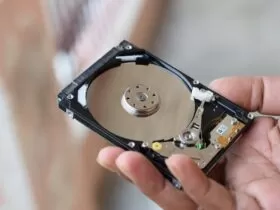In the online marketplace, things are always changing. It can be a constant struggle just to stay up to date. Most businesses can’t afford to lag behind their competition, because if you start dropping on Google’s ratings, you’ll get significantly fewer page hits. This has turned online marketing and website design into a race to get the best SEO rank possible.
However, fancy marketing campaigns and state-of-the-art websites can be expensive. Thankfully, there are a few low-cost tricks you can use to get a higher ranking without spending too much. Here is how updating your old content can help your SEO rankings.
The amount of work needed for old vs new content
There is no other way to say this, but having new, optimized content is a must for every website. SEO is a game-changer, and businesses will either adapt or fall off the first page of search results. Simply put, if you want visitors, you’ll need to have something that will attract them. However, regularly outputting fresh new content can be a massive drain of resources.
Now consider the number of resources needed to generate new content versus the work needed to update old stuff. It’s easier and cheaper to go back and tweak a few things than to make something new from scratch. If updating your old content can help your SEO rankings for less time and money – what’s not to love?


How to market your old content
Most content marketing strategies will focus on new material. However, you can use new content that catches attention and interweave it with old posts. New material can reference and link to past articles, even without the need to update anything. By linking new and old content, you will be building a network of pages for search engines to crawl.
You can even do throwbacks and repost old articles without any changes. Reviews of old trends, recaps, and top-10 lists can all feature old content and still get significant page views.
Change the date and republish your old content
It’s no secret that search engines prefer new content. To be more precise, they favor what they think is fresh content. If you know which rules the algorithms follow, you can adapt. Updating your old content can help your SEO rankings by simply setting new dates to make the content stand out.
How it works is that Google indexes page more often if they have changed. Just by changing something simple like the date and publishing the content again, you will put Google’s crawl-bot to work. It will index the page again and draw attention from the search engine. This will bump your page up in the search results. If you want to learn more about indexing and other SEO technicalities, you can check out our beginners guide.
Having a newer date has an additional benefit. Think of it from the user’s side. Would you rather access content from several years ago or from last month? Even if your content is still relevant, some users might be put off by an old date. They will skip over your article and look for something newer.
Update old titles and headings
This one is more important than you think. Even if you leave the content exactly the same, updating the title can improve your page visits. When users search for something online, most of them don’t click on every article. People just gloss over the titles and open what they think is the best match. Therefore, it’s safe to assume that most people will only ever see the title of your articles. The titles really need to pop and grab the users’ attention. However, trends change, so make sure your articles have appropriate and trending titles.
What people search for can also change over time. Check out which keywords are trending, and make sure to include them in the titles of your content. Do a little research and find out what is working for your competitors. There are many available tools that can help you do keyword research. Find out which keywords are relevant and trending, and update your old content to include them.
Have accurate content
Your old articles might have information and statistics that are not relevant anymore. The content itself might still be viable, and the advice you offer is timeless. Sadly, even if you pair something timeless with old data, it will often be overlooked. Both users and search engines will look for content with accurate and up-to-date information. Update the information to fit the current year and change anything that is obviously wrong. Any outgoing links should also point to relevant and accurate resources.
Check your internal and external links
While we are on the topics of where your links are taking users, you need to make sure they all work. Pages with broken links frustrate users, often causing them to end their session on your website. What’s worse, your site will also get ‘punished’ by search engines, and your ranking will drop.
Of course, you wouldn’t post something with broken links, but what about your old content? You can’t expect all the links to be functional if you just post something and then forget about it for years. Go through your website and make sure none of the links and images are broken. Instead of doing it all manually, you can use SEO tools to help you find and fix broken links. Outgoing links also need to be functional. Since you can’t really fix pages that aren’t on your website, your best course of action is to remove them.
Conclusion
Old content matters. Even if you don’t care about it anymore, the search engines will. Don’t just discard your previous work; it surely still has value. At some point, you put a lot of effort into that content, why not reap the benefits again. We’ve shown you how updating your old content can help your SEO rankings, even if the actual updates are minor. It won’t take a lot of effort on your part, so go ahead and show some love to your old content. If not then hire a content writer for your website.






























